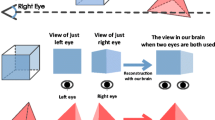Abstract
This work is devoted to the study of photon mapping methods applied to realistic rendering. In distinction from the conventional rendering methods, the calculation of the indirect and caustic luminance is based on backward photon maps (which are also called observation maps). The main advantages of this method are described. These advantages are the natural distribution of the photons in the regions forming the image luminance and the reduction of the number of photons formed on the trace of one ray. The main algorithmic difficulty of the backward photon mapping method is discussed, which is the necessity to synchronize data access during the calculations and accumulate the luminance due to indirect and caustic illuminance. To resolve this difficulty, it is proposed to use intermediate photon maps of the indirect and caustic illumination distributed over the computation threads that render the corresponding parts of the image. Based on this analysis, the method of progressive backward photon mapping is introduced, and an algorithm of realistic rendering based on this method is described. The proposed algorithm does not require additional synchronization during the accumulation of luminance at the image points, which makes it possible to efficiently implement it not only on the central processor but also on graphics processors (GPUs). Results of the qualitative and quantitative comparison of the rendering results produced by the methods of progressive forward and backward photon mapping are presented.









Similar content being viewed by others
REFERENCES
Zhdanov, D.D., Galaktionov, V. A., Voloboy, A.G., Zhdanov, A.D. Garbul’, A.A., Potemin, I.S., and Sokolov, V. G., Photorealistic rendering of images formed by augmented reality optical systems, Program. Comput. Software, 2018, vol. 44, no. 4, pp. 213–224.
Kajiya, J.T., The rendering equation, Proc. of the 13th Annual Conference on Computer Graphics and Interactive Techniques, 1986, pp. 143–150.
Kay, T.L. and Kajiya, J.T., Ray tracing complex scenes, ACM SIGGRAPH Comput. Graphics, 1986, vol. 20, no. 4, pp. 269–278.
Chattopadhyay, S. and Fujimoto, A., Bi-directional ray tracing, in Computer Graphics, Tokyo: Springer, 1987, pp. 335–343.
Lafortune, E.P. and Willems, Y., Bi-directional path tracing, Compugraphics'93, 1993, pp. 145–153.
Jensen, H.W., Global illumination using photon maps, Eurographics Workshop on Rendering techniques, Vienna: Springer, 1996, pp. 21–30.
Jensen, H.W. and Christensen, P., High quality rendering using ray tracing and photon mapping, ACM SIGGRAPH 2007 Courses, 2007.
Veach, E. and Guibas, L.J., Optimally combining sampling techniques for Monte Carlo rendering, Proc. of the 22nd Annual Conference on Computer Graphics and Interactive Techniques, 1995, pp. 419–428.
Georgiev, I., Krivánek, J., Davidovic, T., and Slusallek, P., Light transport simulation with vertex connection and merging, ACM Trans. Graph. 2012, vol. 31, no. 6, pp. 192:1–192:10.
Havran, V., Herzog, R., and Seidel, H.P., Fast final gathering via reverse photon mapping, Comput. Graph. Forum, 2005, vol. 24, no. 3, pp. 323–332.
Hachisuka, T., Ogaki, S., and Jensen, H.V., Progressive photon mapping, ACM SIGGRAPH Asia 2008 Papers, 2008, pp. 1–8.
Zhdanov, D.D., Aleinikov, A.A., Zhdanov, A.D., and Deryabin, N.B., Construction of a model of a continuous light source specified by a fixed set of rays, Program. Comput. Software, 2016, vol. 42, pp. 333–340.
Snyder, W.C., Reciprocity of the bidirectional reflectance distribution function (BRDF) in measurements and models of structured surfaces, IEEE Trans. Geosci. Remote Sens., 1998, vol. 36, no. 2, pp. 685–691.
Voloboy, A.G., Galaktionov, V. A., Ershov, S.V., Letunov, A.A., and Potemin, I.S., Computer appliance for measuring light diffusing properties of surfaces, Inf. Tekhnol. Vychisl. Sistemy, 2006, vol. 4, pp. 24–39.
Sokolov, V.G., Zhdanov, D.D., Potemin, I.S., Bogdanov, N.N., Zhdanov, A.D., and Denisov, E.U., Reconstruction of BSDF based on optimization of microrelief normal distribution, GraphiCon 2017 – 27th Int. Conference on Computer Graphics and Vision, 2017, pp. 37–41.
Funding
This work was supported by the Russian Science Foundation, project no. 18-79-10190.
Author information
Authors and Affiliations
Corresponding authors
Additional information
Translated by A. Klimontovich
Rights and permissions
About this article
Cite this article
Zhdanov, A.D., Zhdanov, D.D. Progressive Backward Photon Mapping. Program Comput Soft 47, 185–193 (2021). https://doi.org/10.1134/S0361768821030117
Received:
Revised:
Accepted:
Published:
Issue Date:
DOI: https://doi.org/10.1134/S0361768821030117




